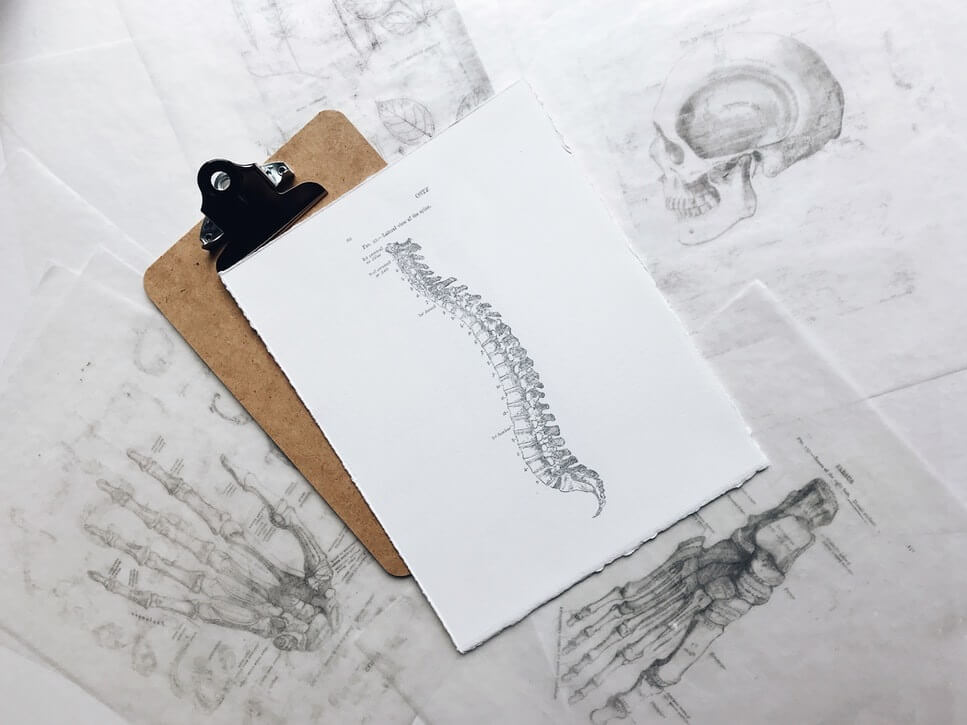- February 10, 2023
- Personal Injury
 The spinal cord is a soft column of tightly bundled nerve cells that extends from the lower part of the brain down through the lower back, and it is the path of communication between the brain and all parts of the body. Spinal cord injuries can result from damage to the actual spinal cord and also the vertebrae (bones), ligaments, or disks of the spinal column. When the spinal cord is injured, the damage can interfere with normal motor, sensory or autonomic functioning and produce changes in strength, sensation and other body functions below the site of the injury. As a result, spinal cord injuries (SCI) are among the most serious injuries that can happen to a person, and they may leave victims partially or totally paralyzed and unable to work or function, and even result in death.
The spinal cord is a soft column of tightly bundled nerve cells that extends from the lower part of the brain down through the lower back, and it is the path of communication between the brain and all parts of the body. Spinal cord injuries can result from damage to the actual spinal cord and also the vertebrae (bones), ligaments, or disks of the spinal column. When the spinal cord is injured, the damage can interfere with normal motor, sensory or autonomic functioning and produce changes in strength, sensation and other body functions below the site of the injury. As a result, spinal cord injuries (SCI) are among the most serious injuries that can happen to a person, and they may leave victims partially or totally paralyzed and unable to work or function, and even result in death.There are many types and degrees of spinal cord injuries, and the effects on the body, the resulting disability, and the chances of improvement or recovery depend on factors such as the type, location, and completeness of the damage. If you or a loved one has suffered a spinal cord injury, it's helpful to understand what the types of injuries are and how they can affect your life.
Types of Spinal Cord Injuries
According to the Mayo Clinic, the ability to function after a spinal cord injury depends on two factors: where the injury occurred on your spinal cord and the severity and completeness of injury.
Where the Spinal Injury Occurred
According to the National Institutes of Health (NIH), There are four types of SCIs -- cervical, thoracic, lumbar, and sacral, depending on where the injury occurs. In general, the higher in the spinal column the injury occurs, the greater the effects on the person, as damage can cause loss of sensation, movement, strength, and body functions below the site of injury.
- Cervical spinal nerves (C1 to C8) are in the neck region and transmit signals to the back of the head, neck, shoulders, arms, hands, and the diaphragm. Since this area is closest to the brain, injuries are typically most severe and may affect the entire body. When all four limbs are affected, this is known as tetraplegia or quadriplegia and may result in paralysis of the hands, arms, legs, and trunk with the potential inability to breathe, cough, speak, or control bladder and bowel movements.
- Thoracic spinal nerves (T1 to T12) are in the upper mid-back region and control signals to the chest and some back muscles and many organ systems. Injuries to this area can affect bladder and bowel control as well as leg movement and sensation. When the chest and the legs are involved, it is called
- Lumbar spinal nerves (L1 to L5) are in the low back and control signals to the lower parts of the abdomen and the back, the buttocks, parts of the genitals and legs. Lumbar spinal cord injuries can impact ability to walk and control bladder and bowels.
- Sacral spinal nerves (S1 to S5) are in the low back and control signals to the thighs, lower parts of the legs, feet, external genital organs, and anus. Injuries to this area typically cause loss of movement in the hips and legs and leave patients with little or no control of the bowel and bladder.
Complete or Incomplete Injuries
A complete spinal cord injury severs all communication between the brain and the body beyond the point of injury. There is a total loss of sensory and motor function below the injury level and both sides of the body are affected equally.
An incomplete spinal cord injury leaves some sensory and motor function below the point of injury, to varying degrees. There may be more sensation and movement on one side of the body than the other, and some recovery may be possible over time.
Spinal Cord Injury Grading
Spinal cord injuries are graded on a scale developed by the American Spinal Injury Association (ASIA). The less severity, the greater the likelihood of recovery. Doctors grade spinal cord injuries using two sensory exams, a motor exam, and an impairment scale. Muscles are rated on a scale of one to five, where five is normal muscle function and zero is total paralysis.
How Much Can You Get for a Spinal Cord Injury?
When a spinal cord injury tragically occurred due to another party’s negligence or fault, you may be entitled to compensation for your losses through insurance or a personal injury lawsuit. While no amount of money can make up for the suffering involved with a severe spinal injury, a settlement can at least help by easing the financial burdens caused by the accident.
Some ways negligence may lead to spinal cord injuries are:
- Motor vehicle accidents caused by a reckless, distracted or impaired driver
- Slip and fall accidents caused by a negligent property owner who failed to repair or warn of hazards
- Gunshot wounds
- Medical malpractice from faulty medical, surgical or diagnostic procedures and treatment.
According to the National Library of Medicine, nearly a third of SCIs are caused by automobile accidents, and a quarter of these injuries result from falls.
When negligence is involved, compensation for spinal injury victims can be substantial. While each case is different and depends on the circumstances, a successful spinal injury lawsuit can bring an award that covers the costs and losses that resulted from the accident, referred to as “damages” in legal terms. Damage awards should cover economic or monetary losses, and also non-economic damages that do not have a specific dollar value, but negatively impact quality of life.
- Economic damages may include medical and rehabilitative and continuing care, costs of medical devices and modifications to the home, and lost income if you cannot work.
- Non-economic damages may include compensation for physical and emotional pain and suffering, depression and anxiety, disability, loss of quality of life and loss of consortium.
While it is impossible to give you an exact figure, an experienced Michigan spinal cord injury attorney can evaluate your case and estimate what it should be worth.
Get Help from a Spinal Cord Injury Attorney
If you or a loved one suffered a spinal cord injury due to another party’s negligence or fault, the Michigan Spinal Cord Injury Lawyers at Goodman Acker can help you pursue the full compensation you are entitled to by law. With our more than 150 combined years of experience, we will handle all investigations, negotiations, legal hurdles, and requirements needed to help get you the settlement you deserve.
We understand how devastating a spinal cord injury can be, and are fully prepared to help. Call us today at 248-286-8100 for a free, no-obligation consultation with our trusted and compassionate attorneys, so we can get started working on your case while evidence is fresh and witnesses can be found.
GET HELP NOW 248-286-8100

